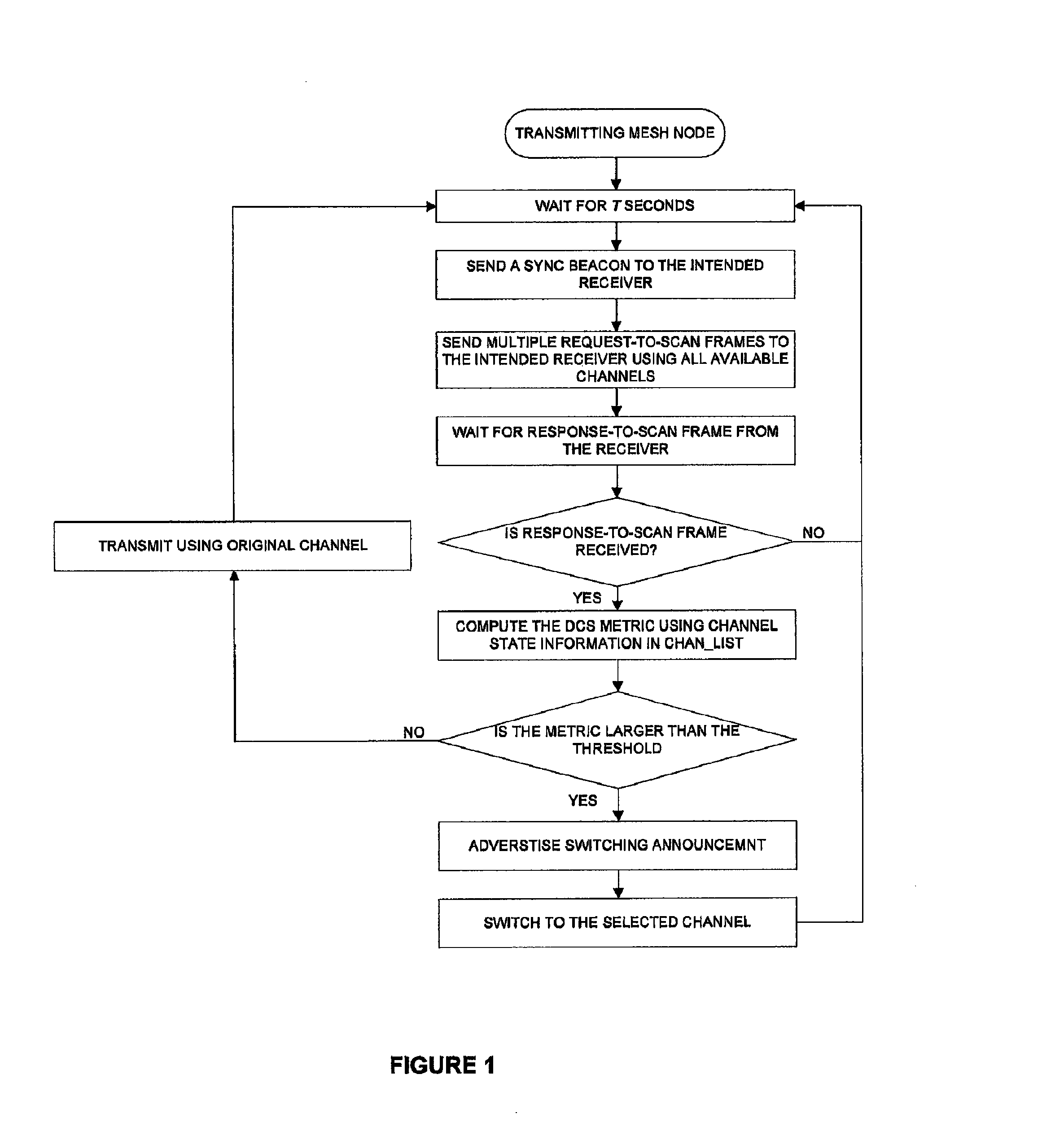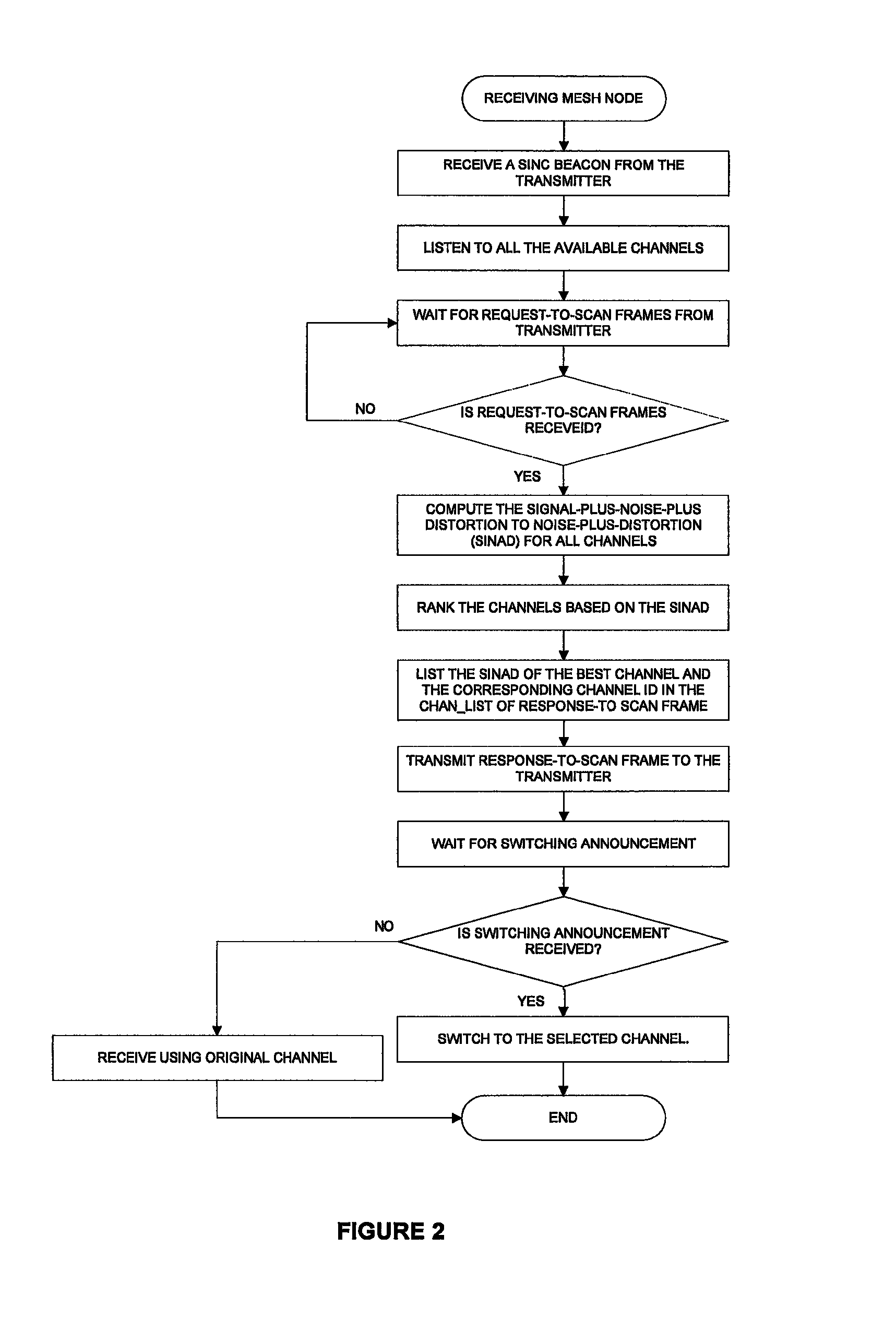Dynamic channel switching for wireless mesh networks
a wireless mesh network and dynamic channel technology, applied in the field of wireless mesh networks, can solve the problems of insufficient channel bandwidth, failure to propose interference limits, and detrimental to the capacity and quality of network system services, and achieve the effect of increasing the connectivity of nodes
- Summary
- Abstract
- Description
- Claims
- Application Information
AI Technical Summary
Benefits of technology
Problems solved by technology
Method used
Image
Examples
Embodiment Construction
[0026]In the following description, for purposes of explanation, numerous details are set forth, such as flowcharts and system configurations, in order to provide an understanding of one or more embodiments of the present disclosure. However, it is and will be apparent to one skilled in the art that these specific details are not required in order to practice the present disclosure.
[0027]As used herein, a “wireless mesh network” may describe a communication network made up of nodes organized in a mesh topology that consists of mesh clients, mesh routers and gateways.
[0028]A “dynamic channel switching” may describe a dynamic assignment strategies that allow any nodes to be assigned any channel, and nodes can frequently switch from one channel to another, and thereby offering the potential to use many channels with few nodes.
[0029]A “node” or mesh node may describe two types of nodes: mesh routers and mesh clients. The mesh routers contain additional routing functions to support mesh ...
PUM
 Login to View More
Login to View More Abstract
Description
Claims
Application Information
 Login to View More
Login to View More - R&D
- Intellectual Property
- Life Sciences
- Materials
- Tech Scout
- Unparalleled Data Quality
- Higher Quality Content
- 60% Fewer Hallucinations
Browse by: Latest US Patents, China's latest patents, Technical Efficacy Thesaurus, Application Domain, Technology Topic, Popular Technical Reports.
© 2025 PatSnap. All rights reserved.Legal|Privacy policy|Modern Slavery Act Transparency Statement|Sitemap|About US| Contact US: help@patsnap.com



